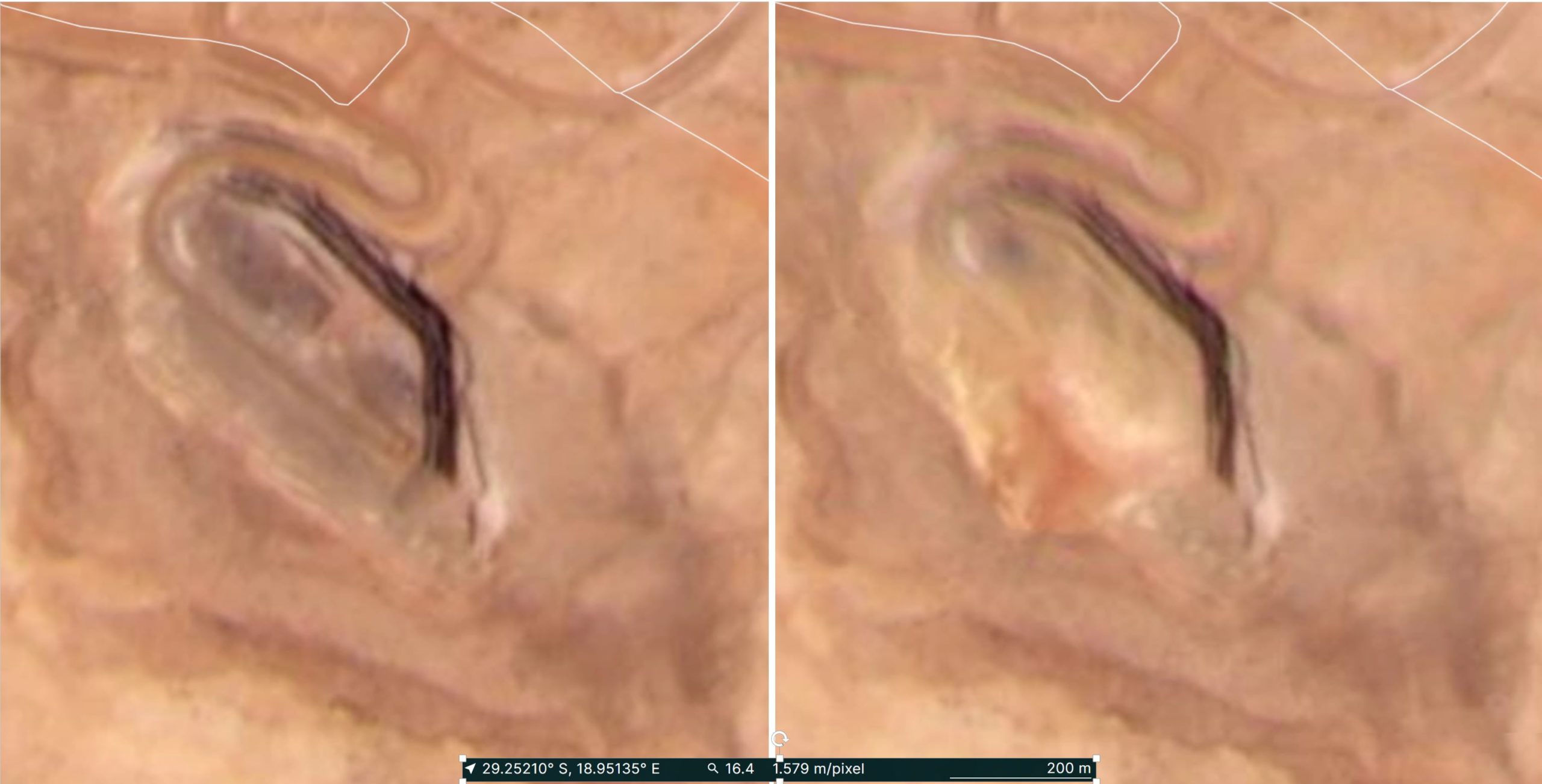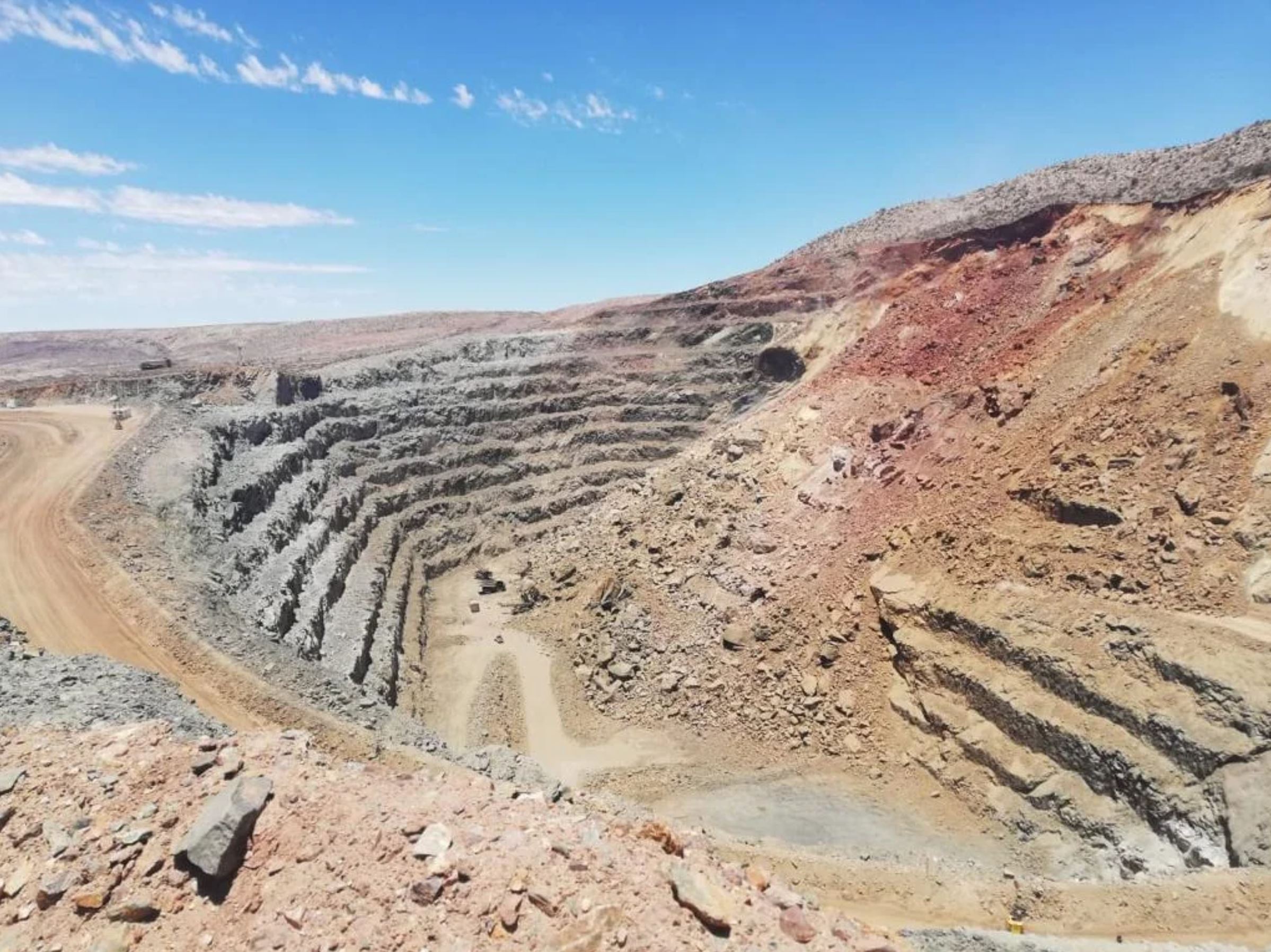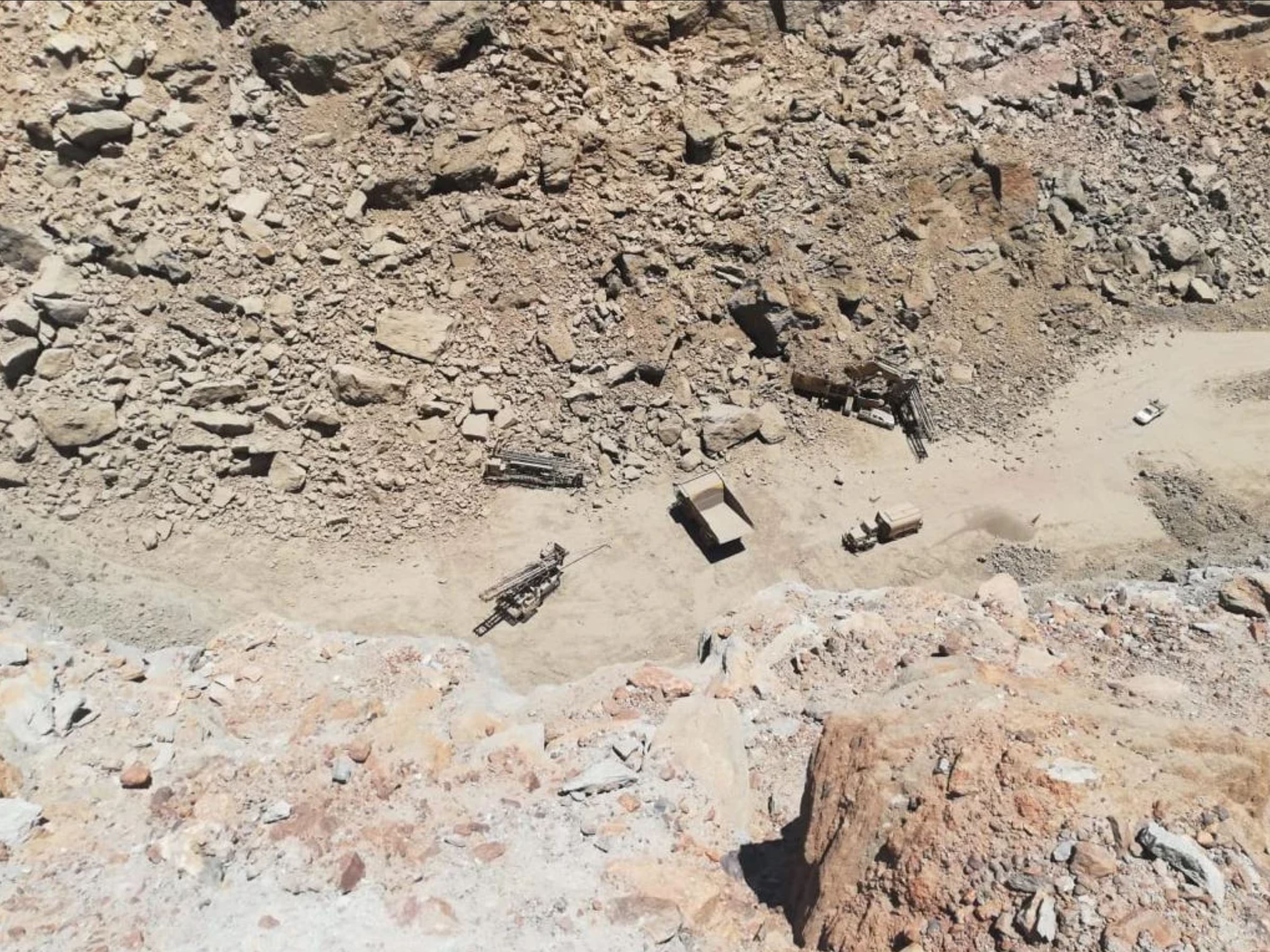2 December 2020
Gamsberg mine in South Africa: when is a landslide a geotechnical failure?
Posted by Dave Petley
Gamsberg mine in South Africa: when is a landslide a geotechnical failure?
Gamsberg mine is a comparatively new open cast pit in the Northern Cape, South Africa. Operated by Vedanta Zinc International, it currently produces 400,000 tonnes of ore per month. Once full production capacity is reached Gamsberg is expected to produce 4 000,000 tonnes of ore and 250,000 tonnes of zinc-in-concentrate per year. The current reserve and resource is 214 million tonnes, and operations are estimated to last about 30 years.
On 17 November at about 1:15 am Gamsberg suffered what its owners are describing as a “geotechnical failure” that was sufficiently large to require that the company release a formal statement. The failure occurred in a high wall excavation known at a part of the mine known as the South Pit. At the time of the failure there were ten members of staff at the bottom of the pit. Eight were rescued, but it appears that the other two were killed.
The failure is sufficiently large that it is clearly visible on the daily Planet Labs imagery. The images below show the South Pit; the left image was captured on 14 November, before the landslide, and the image on the right was captured after the event on 17 November.

Planet Labs imagery showing the Gamsberg mine before the failure (left, collected on 14 November 2020) and after (right, collected on 17 November 2020). Images courtesy of Planet Labs,used with permission. Copyright Planet Labs.
.
Images of the landslide at Gamsberg mine have also been posted to Reddit. This image provides an overview of the landslide itself:-

An overview of the landslide at Gamsberg mine. Image posted anomalously to Reddit.
.
Whilst this image shows the damage caused by the landslide:-

The damage caused by the landslide at Gamsberg mine. Image posted anomalously to Reddit.
.
There is very little additional information about this very large mining landslide. The impact on the workers in the mine and to the equipment above suggests that it might not have been anticipated. As high wall mines often have sophisticated monitoring of their slopes, it is increasingly unusual for the operators to be taken by surprise by such events.
.
Reference and acknowledgement
Planet Team (2020). Planet Application Program Interface: In Space for Life on Earth. San Francisco, CA. https://www.planet.com/


 Dave Petley is the Vice-Chancellor of the University of Hull in the United Kingdom. His blog provides commentary and analysis of landslide events occurring worldwide, including the landslides themselves, latest research, and conferences and meetings.
Dave Petley is the Vice-Chancellor of the University of Hull in the United Kingdom. His blog provides commentary and analysis of landslide events occurring worldwide, including the landslides themselves, latest research, and conferences and meetings.
The size of the rock truck and other equipment relative to the debris certainly gives you a sense of the scale of both the mine and the slide!
I note the November 14th image has a reddish area on the SW wall that closely corresponds with the crown scarp of the future failure.
These big pit wall failures (and this is big – looks like it extended over 200 metres horizontally) are usually preceeded by many warning signs, Whether those were noticed, or acted upon is unknown at this time but will come out in the investigation. No mine owner/operator wants this to happen, not only the risk to people and equipment, but a major failure like this can compromise an entire mine life, and has certainly severely impacted operations and cash flow. This is a brand new mine, with (very reputable) contractors mining for the owners (Indian company Vedanta Resources). Havent been able to access the feasibility study to see who geotechnical consultants were, but they will be having sleepless nights and checking insurance and passports. However, normally the consultants are extremely cautious in their recommended design criteria, but the final design, and its implementation are ultimately the responsibility of the owners.
The low fatality rate suggest that the crews in the pit had some warning and tried to get to safety (the location of the equipment suggests they were working on the side of the pit that failed)- as the fall appears to have covered the main access ramp. But the main focus will be on what monitoring was in place, who was monitoring, when, and what warnings were given to who, and what did they do about it.
Modern pits normally have radar systems which can pick up movements of millimeters and scan every few seconds, and usually detect the gradual relaxation of an entire wall days or even weeks before a failure. Vedanta use radars at other sites, so that should have been an option here. Slope failures at the Vedanta Skorpion mine across the border in Namibia also apparently suffered slope failures which resulted in premature closure of that operation earlier this year – but as far as I am aware no-one was hurt there. I think they had a radar system, but whether that was active in avoiding injuries, who knows. Looking at the state of the benches it looks like they are all temporary, not final walls, and so not safely accessible to check for cracking that are early warning signs – when rocks spill down onto the bench from blasts above it is almost impossible to clean them, usually considered not worthwhile – but means actual walking the ground looking at the rocks is not possible – which means you cant see a problem developing without a radar – and unable to properly investigate it even if you see a problem developing.
Going to be interesting to find out (eventually) what was known , by whom, beforehand, and what monitoring, training and supervision was being implemented.
Gamsberg is in a very dry area, the mine is on top of a hill, so water is unlikely to have played a role in this collapse. Unlikely to be linked to earthquakes either (Vedanta operate the very deep Black Mountain underground mine not far from Gamsberg – where a worker was apparenlty killed underground in a rock fall earlier this year!).
But a bad start for a long life mining asset, and coupled with similar occurrences at Skorpion, you have to wonder if there is a corporate problem here…trying to squeeze things too tight, pushing things too far, or not having the right people at any of multiple levels that are required to ensure things are done properly at the right time.
But commiserations to family, colleagues and friends of the deceased – it must have been a truly scary event. The local community will be devastated at this huge event, I am sure.
Now the blame game begins!
The remains of Chris Whitlow was only recovered yesterday after 2 years and 6 months. I knocked off at 9pm, the shift before the tragic event took place. At the time of event there were zero radars on that mine. Zero technical monitoring systems, only installed after the event took place.
Reports of external consultants suggested that access to the pit should be closed, (a year before event took place) unless measures be put in place to avoid a slope failure. Absolutely nothing was done or put in place.
Finally the remains were recovered of Chris, so the enquiry will start soon.
I hope the truth about this event will uncovered.
RIP – Chris & Melvin(Skoene)